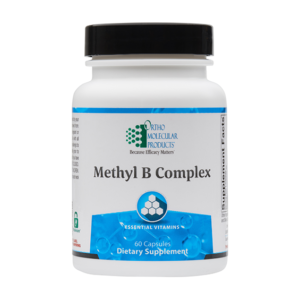Niacin (Vitamin B3) and Cholesterol
So far, we’ve discussed four of the eight B vitamins. We’ve learned that meat, eggs, fish, and dairy are the only sources of B12, a critical vitamin for our mental health as we get older. We discussed the importance of folate (B9) for women. We also discussed how thiamine (B1), and riboflavin (B2) play a key role in energy production, and more specifically how riboflavin can prevent migraine headaches. Let’s continue this discussion with a look at niacin (B3).
Vitamin B3 (Niacin)

The B vitamin niacin, like thiamine and riboflavin, participates in the energy metabolism of every cell in the body. Like all B vitamins, it’s water soluble, which means you must get plenty of it in your diet. It helps your digestive system work properly, and it’s vital to your nervous system. Niacin also helps with cholesterol, fatigue, and the common cold. And not getting enough niacin can cause serious illness.
Pellagra: The Discovery of Niacin
Cornmeal, molasses, and fatback pork! That’s about all a millworker or poor rural farmer in the South during the early 1900s could afford to eat. Those foods were staples because they were inexpensive and needed little preparation.
Eating such a limited diet led to widespread malnutrition, which manifested itself in a nutritional disorder called pellagra. The primary symptoms of pellagra are known as the four “D’s”: diarrhea, dermatitis, dementia, and death. Dermatitis, the telling sign of pellagra, appeared as skin eruptions. The skin eventually gets to the point that it turns dark and appears dirty and flaky. The depression that pellagra causes often developed into psychosis. Many people suffering from pellagra were committed to insane asylums where death soon followed.
In the early 1900s, pellagra inflicted so many people in the Southern United States that Congress asked the Surgeon General to investigate the disease. In 1923, Joseph Goldberger, a medical officer appointed by the US Surgeon General, discovered that poor diet caused pellagra. In the 1930s, an American biochemist discovered the missing nutrient—niacin. The typical foods consumed by poor Southerners—cornmeal, molasses, and fatback pork—didn’t contain niacin.
By the 1950s, manufacturers fortified all bread and cereal products in the US with niacin. Doctors now consider pellagra a rare disease in western industrialized nations.
Niacin Deficiency Symptoms
- Diarrhea
- Dermatitis
- Depression
- Low appetite
- Elevated blood lipids
Why Might Niacin Deficiency Occur?
- Too much alcohol. (This is typically the only reason we see pellagra in the US today.) Alcohol inhibits the absorption of all B vitamins.
- Not eating enough meat. Not only is meat the best source of niacin, it’s also the best source of tryptophan; our bodies can convert tryptophan to niacin when needed. Scientists and governments actually enacted food fortification to make up for the lack of animal foods in many nations’ diets.
Sources of Niacin
- Fish (tuna is the single best source)
- Poultry
- Pork (it’s in the muscle but not the fat)
- Nuts (all kinds of nuts contain niacin)
- Eggs
- Mushrooms
- Sunflower seeds
Recommended Niacin Intake
Men need about 16 mg/day of niacin, and women need about 14 mg/day. If you eat meat, you can pretty easily consume that much niacin. A three-ounce chicken breast contains about 9 mg of niacin. Throw in a handful of nuts (about 5 mg of niacin) and you’re pretty much there. The USDA lists 35 mg/day as the safe upper limit of niacin intake per day.
Niacin And Cholesterol
For over 50 years, doctors have prescribed large doses of niacin to help improve blood lipids associated with cardiovascular disease. However, its use has become limited because the most common side effect of large doses of niacin is dilation of the capillaries of the skin, known as the niacin flush, where the skin becomes red, warm and itchy. Niacin flush isn’t harmful, but it can be uncomfortable and annoying. In recent years, pharmaceutical companies have developed extended-release forms of niacin that usually prevent the unpleasant side effects of flushing.
 Niacin effectively increases HDL cholesterol and lowers triglycerides and LDL cholesterol. In a study involving 18 women, high doses (1000 mg/day) of extended-release niacin for four weeks increased HDL cholesterol by 33% and reduced LDL cholesterol by 15%. Other studies have shown that niacin can reduce triglycerides by 25%. Niacin actually improves blood lipids and lowers arterial plaque better than statins.
Niacin effectively increases HDL cholesterol and lowers triglycerides and LDL cholesterol. In a study involving 18 women, high doses (1000 mg/day) of extended-release niacin for four weeks increased HDL cholesterol by 33% and reduced LDL cholesterol by 15%. Other studies have shown that niacin can reduce triglycerides by 25%. Niacin actually improves blood lipids and lowers arterial plaque better than statins.
Scientists developed statins as a treatment for high cholesterol because many people could not deal with the side effects of high-dose niacin. Statins are a little more effective at lowering LDL cholesterol than niacin. But niacin is more effective at increasing HDL and lowering triglycerides than statins.
Statins induce numerous side effects, and most people do not tolerate them well. The most concerning problem with statins—they cause muscle pain and muscle weakness. Statins can actually reduce your muscle mass.
If your doctor has you taking statins for high cholesterol and you don’t like the way they make you feel, you may want to ask him/her to consider letting you try niacin. If they’re not educated on niacin as a treatment for cholesterol, refer them to this review in the Journal of Internal Medicine.
High-dose niacin acts more like a drug than a vitamin. Consult your physician before you consider taking more that 50 mg of niacin a day (that’s the amount in most multivitamins).
High-dose niacin comes with several possible side effects, including rapid heartbeat, itching, nausea, and possible liver damage. However, not everyone will experience these side effects. Interestingly, this list of possible side effects for niacin resembles the list of statin side effects, with the exception of the muscle weakness and possible muscle loss associated with statins.
If you eat plenty of meat and nuts on a regular basis, you probably don’t need to worry about niacin. But if you drink lots of alcohol (15 servings a week for men; 8 servings a week for women) you should definitely consider a daily B Complex vitamin, as alcohol interferes with all B vitamins.
Stay Strong,
Bo Railey

